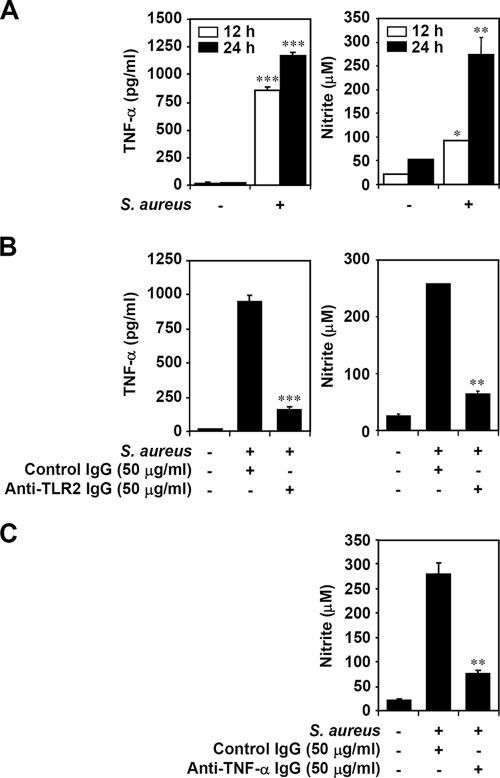FIG. 1.
Effects of TLR2 and TNF-α on heat-inactivated S. aureus-induced NO production in microglia. (A) BV-2 mouse microglial cells (3 × 104) were treated with heat-inactivated S. aureus (3 × 105) for 12 and 24 h. After the supernatant had been collected, we determined TNF-α and NO production by using ELISA and Griess reagent, respectively. Sodium nitrite (NaNO2) was used for the standard calculation of nitrite concentration. (B) BV-2 cells (3 × 104) were treated with heat-inactivated S. aureus (3 × 105) for 24 h with cotreatment of isotype-matched antibody control (50 μg/ml) or anti-TLR2 IgG (50 μg/ml). ELISA and Griess reagent were used to determine TNF-α and NO production, respectively. (C) BV-2 cells (3 × 104) were treated with heat-inactivated S. aureus (3 × 105) for 24 h with cotreatment of isotype-matched antibody control (50 μg/ml) or anti-TNF-α IgG (50 μg/ml). Griess reagent was used to determine NO production. The data are means ± the standard deviation (SD) obtained from three individual experiments. *, P < 0.05; **, P < 0.01; ***, P < 0.001, compared with S. aureus alone or S. aureus plus isotype-matched antibody control.

